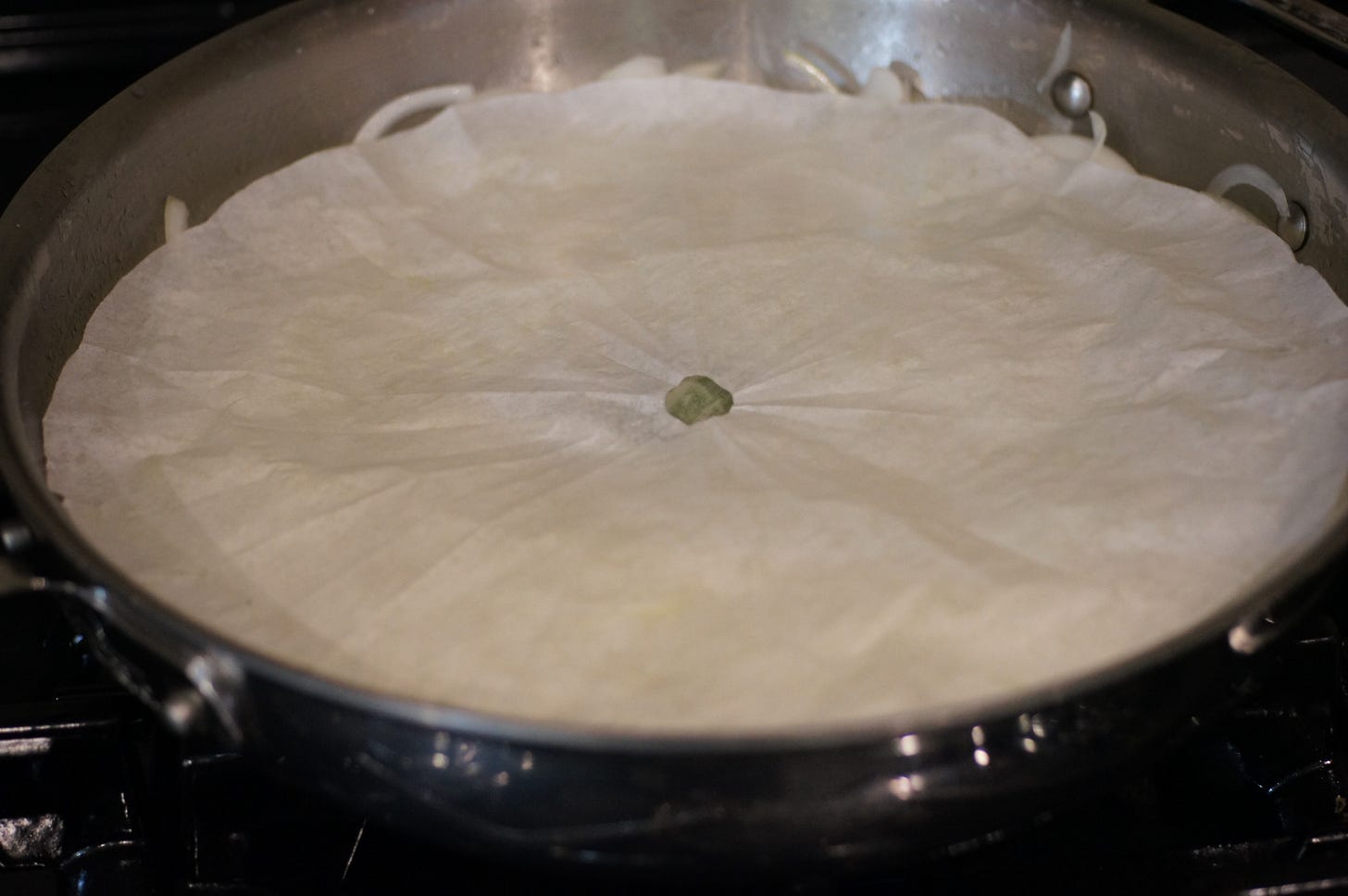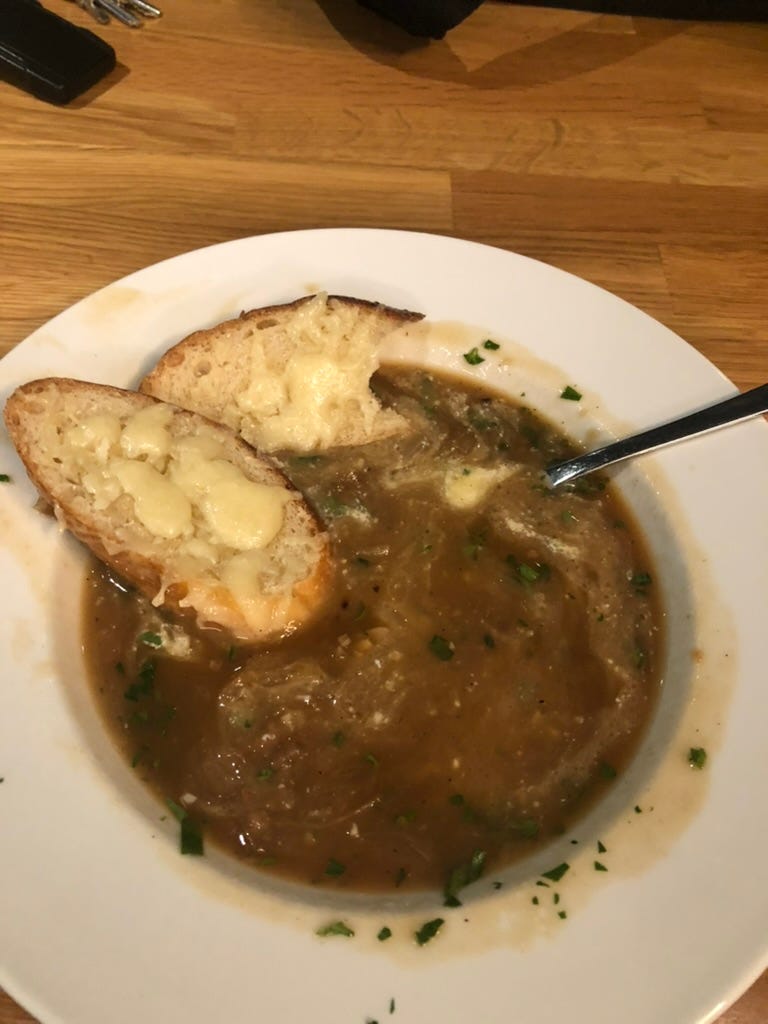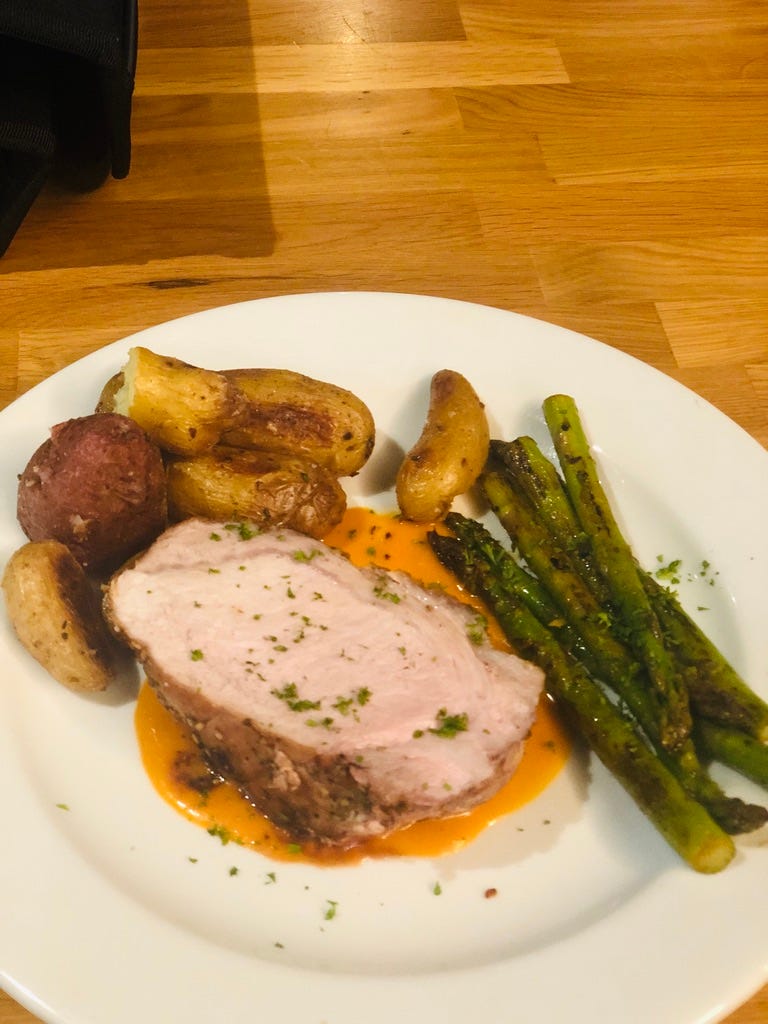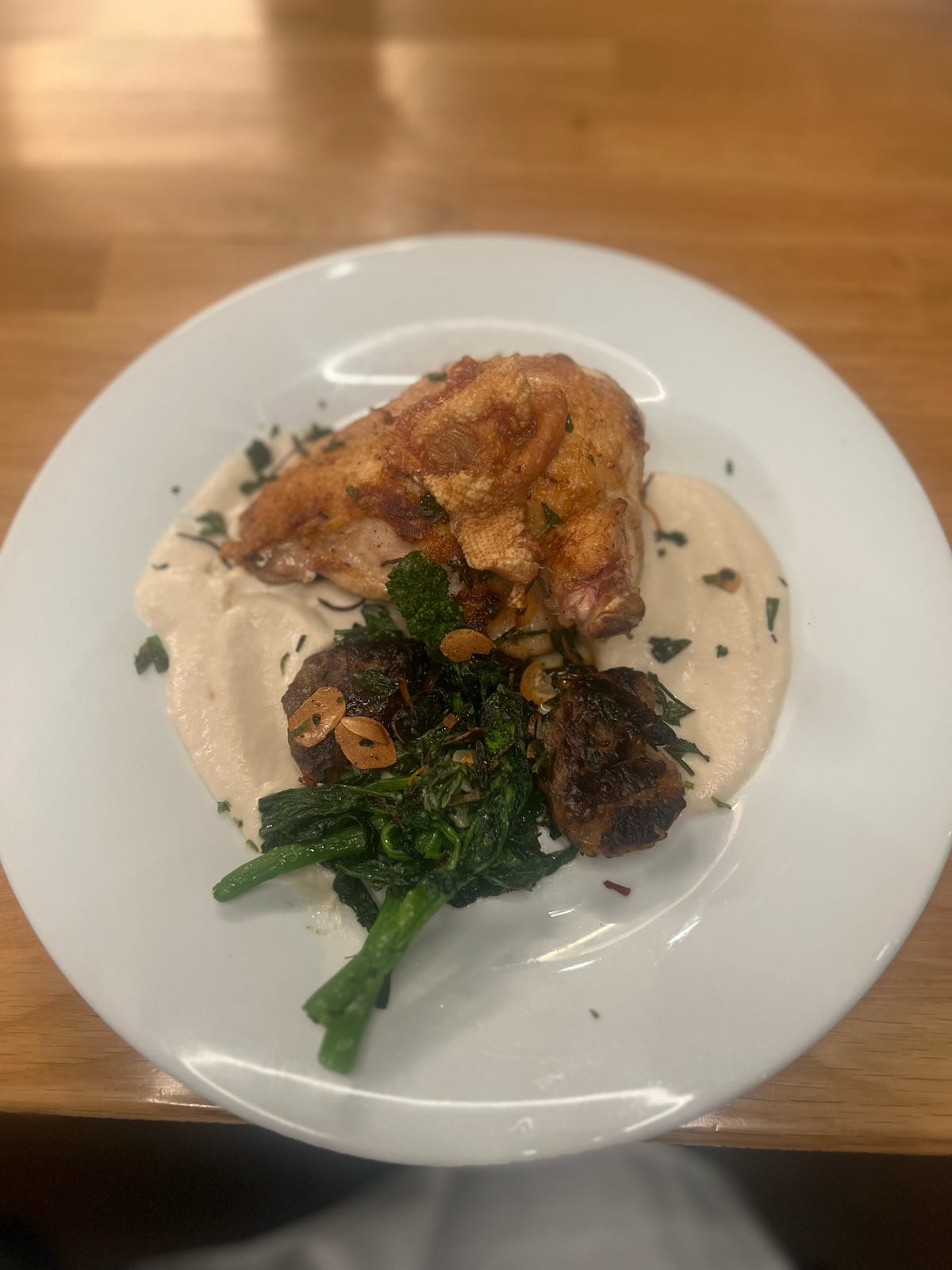Étuve
Don’t let the fancy French name fool you. This is an easy technique you’ll come to use over and over again.
I know what you’re thinking. Barely two months into the culinary program and he’s already become Mr. Fancypants throwing around the French.
But, as you can imagine, we do a lot of cooking in the culinary program, which means using a lot of French terms. While I can spare you a lot of it (ie: slicing onions rather than emincé) this one is actually worth knowing.
It’s a technique that we’ve used over and over again called étuve, and it’s already proven a game changer.
To étuve just means steaming vegetables (or other products) in their own juices, covered, after sauteeing in fat. (Note, don’t confuse étuvé w/ étouffe. The latter means to smother — i.e.: crawfish étouffe — and is a totally different thing.) We’ve used this technique with onions and other vegetables as the start of several different applications — preparing onions for soup or sauces, making a coulis, creating a base for steamed fish — which I’ll break down in more detail below.
But first, the actual technique. So far we’ve only étuved using vegetables, so that’s how I’ll describe it here, but you can also étuvé meats as well.
Slice up your vegetables into ⅛ -¼ inch slices
Saute them in butter in a saute pan until just beginning to wilt but not browned
Lower the heat and cover with a cartouche (yes, more fancy French… more on this below)
Let steam, stirring occasionally, until soft
A cartouche is a lid made of parchment paper. Here’s an easy diagram on how to make one. We also cut a small hole in the center of it to let some steam escape. Cartouche just means “false lid.” Because it’s paper, you can (and should) push it down to literally touch the vegetables, unlike a regular lid that leaves plenty of air between the veggies and the top of the pan.
The benefit of this method is that it traps the steam and blocks evaporation. As a result, the vegetables soften quicker, and with more flavor, while controlling browning. (You can totally still brown vegetables though, as you’ll see.)
What I love about this method is that it cooks vegetables without destroying them. I’ve always had a problem cooking down vegetables on the stovetop. I either brown them too quickly, resulting in a crunchy, hard bite, or I cook them so long they sort of shrivel up and lose their shape. I’ve never, ever, successfully made caramelized onions.
But the étuvé makes this easy, and has become a critical technique to pull off multiple applications. All three listed below can be used as a powerful accent to many meals, elevating what you’re already making to “wow” status.
This kind of falls into the “cook smart not hard” category. It’s not a shortcut. Not a “secret technique.” Not a fucking “hack.” It’s science. But what’s interesting to me is that I’ve not seen étuvé referenced much in recipes. Try Googling it and you won’t get many useful results. My guess is that it’s just a chef thing that mainstream cooking sites just blow off or never learned.
But in this program anyway, it’s one of the first things we learned, and so far anyway the technique we’ve continually used most. Here’s a few examples of what we’ve done with it…
Onion Soup/Gravy
Étuve 2 - 3 sliced onions
Remove cartouche and cook at a low temp until onions are caramelized and the bottom of the pan is browned with fond
Add a clove of pasted garlic and cook for another minute
Deglaze with about a third cup of wine (we used equal parts madeira, white and port, each added one at a time until dry)
Cook down until pan is dry
Add a tablespoon of butter. Once melted a ¼ cup flour and stir until pan is dry
Add 4 cups chicken stock. If you have it, add a teaspoon of demiglace
Bring to a simmer and cook for ~15 minutes.
Season and enjoy
As a soup, it’s a nice first course. You can probably use this as a base for French Onion soup. Or, use less stock and maybe more flour to turn this from a soup to a gravy to serve with chicken, bangers and mash, etc.
Red Pepper Coulis
Étuve a sliced onion in 1 tablespoon of butter until soft
Add 2 cloves of pasted garlic and 2 - 3 julienned red peppers and continue cooking until soft
Add another tablespoon of butter, melt, and then dust w/ flour, cooking until the pan is dry
Add 1.5 cups chicken stock and simmer until reduced by half
Puree in a blender and strain through a fine mesh.
Add another tablespoon of butter, and season to taste
As the pictures above show, this goes great with seared/roasted pork loin, or with seared scallops, among many other things (fish, eggs, whatever).
Q: What’s the difference between a coulis and a puree?
A: A coulis is passed through a strainer after being pureed.
Q: What’s the difference between a coulis and a sauce?
A: A coulis is a specific type of sauce, usually thinner and smoother than most and used as an accent. Sauce is a very broad category that takes multiple forms.
Soubise (Onion Sauce)
Étuve 2 cups sliced onions
Put while hot into a blender. While running, add just enough heavy cream to create a puree (as thick or thin as you like. I’d go thick, and simply add more cream later to adjust).
Optional: strain if necessary to form a smoother sauce
Taste and adjust seasoning as you like
You can use this as is, or spice it up w/ curry powder, garlic, or whatever.
This sauce is great with roast or pan-seared chicken. I mean it really pops what is usually a boring weeknight dinner to a fancy French-style meal with minimal stress.
Those are just three applications of étuvé. I’m sure it can be applied to any vegetable preparation where you want the veggies soft, but not browned or withered. But I don’t think I’d use it for dishes where you want the vegetables to retain a little bite (like ratatouille).
Random Notes:
Equipment: Most of the stuff marketed to home cooks is overpriced and under functional. You’re paying for looks over function. A typical stainless steel saute pan from All Clad or other consumer brands is gonna set you back over $100. While they cook fine, their fancy-schmancy concave handles are very hard to grip properly. Meanwhile, this professional grade French saute pan is only $30, has multiple uses (saute, sauce, etc.) AND it has a nice, round, easy-to-grip handle.
Saucing: Cover your plate with the sauce (coulis, etc.) and then place the protein/veggies on top of the sauce. Not only does it look better, but it helps retain texture (ie: crispy skin chicken becomes soggy skinned chicken if you pour sauce over it, but stays crispy with the sauce beneath).





